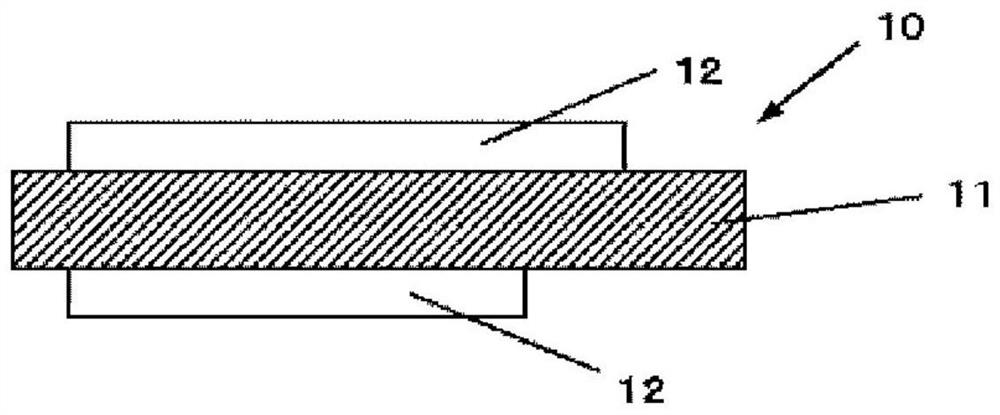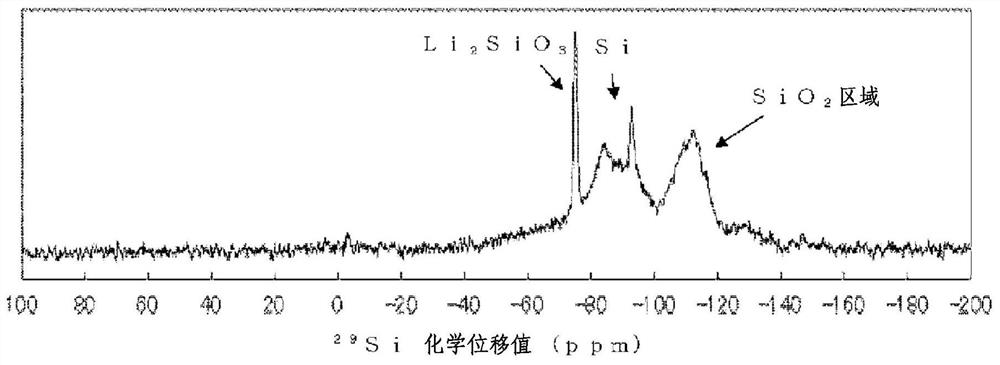Negative electrode active material, mixed negative electrode active material, aqueous negative electrode slurry composition, and method for producing negative electrode active material
A technology of negative electrode active material and silicon compound, which is applied in the direction of active material electrode, negative electrode, battery electrode, etc., can solve the problem of insufficient stability of aqueous negative electrode slurry, and achieve the effect of good initial charge and discharge characteristics.
- Summary
- Abstract
- Description
- Claims
- Application Information
AI Technical Summary
Problems solved by technology
Method used
Image
Examples
Embodiment 1-1
[0196] Through the following steps, make Figure 4 A laminated film type lithium ion secondary battery 20 is shown.
[0197] First, make the positive electrode. Mixed positive electrode active material, 95% by mass of LiNi as lithium nickel cobalt composite oxide 0.7 co 0.25 Al 0.05 O, 2.5% by mass of the positive electrode conductive aid and 2.5% by mass of the positive electrode binder (polyvinylidene fluoride: PVDF) to make the positive electrode mixture. Next, the positive electrode mixture was dispersed in an organic solvent (N-methyl-2-pyrrolidone: NMP) to prepare a paste-like slurry. Next, the slurry was applied to both surfaces of the positive electrode current collector using a coating device having a die, and dried using a hot-air drying device. At this time, a positive electrode current collector having a thickness of 15 μm was used. Finally, compression molding is performed using a roller press.
[0198] Subsequently, a negative electrode was fabricated. Fi...
Embodiment 1-2~ Embodiment 1-3
[0211] (Example 1-2 to Example 1-3, Comparative Examples 1-1, 1-2)
[0212] Production of a secondary battery was performed in the same manner as in Example 1-1 except for adjusting the amount of oxygen in the bulk silicon compound. At this time, the amount of oxygen is adjusted by changing the ratio of metal silicon to silicon dioxide in the silicon compound raw material or by changing the heating temperature. Table 1 shows SiO in Examples 1-1 to 1-3 and Comparative Examples 1-1 and 1-2 x The x-values of the indicated silicon compounds.
[0213] In this case, the silicon-based active material particles of Examples 1-1 to 1-3 and Comparative Examples 1-1 and 1-2 had the following properties. The interior of the silicon compound particles in the negative electrode active material particles contains Li 2 SiO 3 and Li 2 Si 2 o 5 . In addition, the half width (2θ) of the diffraction peak derived from the Si(220) crystal plane obtained by X-ray diffraction of the silicon ...
Embodiment 2-1、 Embodiment 2-2
[0221] Except for changing the type of lithium silicate contained in the silicon compound particles to that shown in Table 2, secondary batteries were produced under the same conditions as in Example 1-2, and the cycle characteristics and initial efficiency were evaluated.
PUM
| Property | Measurement | Unit |
|---|---|---|
| particle size | aaaaa | aaaaa |
| thickness | aaaaa | aaaaa |
| particle diameter | aaaaa | aaaaa |
Abstract
Description
Claims
Application Information
 Login to View More
Login to View More - R&D
- Intellectual Property
- Life Sciences
- Materials
- Tech Scout
- Unparalleled Data Quality
- Higher Quality Content
- 60% Fewer Hallucinations
Browse by: Latest US Patents, China's latest patents, Technical Efficacy Thesaurus, Application Domain, Technology Topic, Popular Technical Reports.
© 2025 PatSnap. All rights reserved.Legal|Privacy policy|Modern Slavery Act Transparency Statement|Sitemap|About US| Contact US: help@patsnap.com



